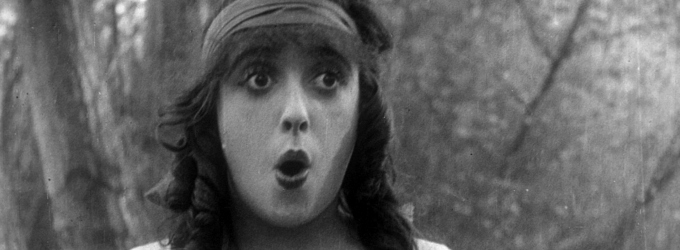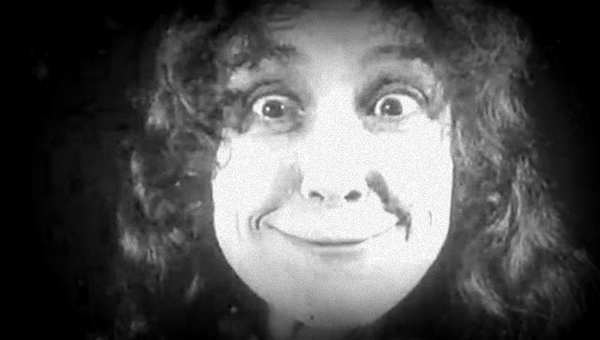 All around the world the centenary of the outbreak of the Great War is being marked. Ranging from letters to the Unknown Soldier, to plays and serials on TV, and a sea of ceramic poppies ‘growing’ around the Tower of London, we seem to be fascinated by all things 1914.
All around the world the centenary of the outbreak of the Great War is being marked. Ranging from letters to the Unknown Soldier, to plays and serials on TV, and a sea of ceramic poppies ‘growing’ around the Tower of London, we seem to be fascinated by all things 1914.
As with any event of this magnitude, there’s an element of band-wagon jumping by some, but all things considered the genuinely interesting and valuable projects in progress will hopefully add to our understanding of the world that was shattered by ‘the war to end all wars’. In 1914, cinema was a mere 20 years old; by 1910 all the basic cinematic techniques used today had been developed by the early film-makers. For the working classes, a regular trip to the local fleapit was immensely popular – it was cheap, warm and fun. Following the post-1910 cinema-building boom, purpose built picture palaces began to appear in every city. The cinema programme echoed the format of the familiar variety bill at the music hall – lots of different ‘acts’, comedy, drama, magic, acrobatics, song and dance.
In compiling A NIGHT AT THE CINEMA IN 1914, the BFI National Archive have drawn together a highly entertaining collection of films made and seen during 1914, some dating from early in the year, others from after hostilities commenced in August. In keeping with 1914 trends in cinema, the BFI have included a varied selection of shorts (a few features had been made but shorts were still popular), which are mainly comic, with an occasional travelogue, a few newsreels, glimpses of popular serials and a terrific example of early synchronised sound. Stephen Horne’s new score is delightful, not at all flashy but a perfect accompaniment to the visual feast.
The 2014 audience [was] chuckling away unselfconsciously throughout.
With film still closely allied to the musical hall stage, some of the camera work is static and perhaps dull to our speedy eyes but you could take it as an opportunity to sit back and be entertained by what you see. So what’s on offer along with your sunflower seeds and nuts, all ready to chuck at the screen or at the resident musicians? Little American influence is evident at this stage, although that would soon change; what we can see is buckets of slapstick, which is undeniably funny – if limited in intellectual appeal. The 2014 audience at the Picturehouse, though, was highly amused – chuckling away unselfconsciously throughout.
The serial had already caught on, with the idiotic Pimple and the intrepid Pauline being pick of the bunch. The adventures of Pimple are completely silly, with no attempt at sophistication in story, props or camera technique, but it’s good-natured at least. It’s knowingly daft, constantly sending up the then present fears of ‘foreigners’ and spies – it’s impossible not to laugh. We are allowed a snippet of one of THE PERILS OF PAULINE as she is whisked away in an escaped hot air balloon – who knows what happened to her! There’s a travelogue of Kitchener (pre-Secretary of State for War days) in Egypt inspecting Indian and Egyptian troops, with some interesting slow panning shots of the Arab quarter in Cairo followed by a pre-Howard Carter visit to the pyramids at Giza; a newsreel of Emmeline Pankhurst being arrested – timely because shortly afterwards she was working with Lloyd George to organise women in the workplace. Great change of tactic, Emmeline! Also news of Ernest Shackleton’s expedition to the South Pole, and to confirm that there really is nothing new under the sun, the camera concentrates on the huskies (ready YouTube?), complete with some early product placement for Spratt’s dog food!
Daisy wants to beat her husband in a face-pulling competition (well, why wouldn’t you?)
The Chaplin film, A FILM JOHNNIE, is pretty ordinary, not much more sophisticated than any of the other acts – it’s all about falling down, pulling faces and being chased. And finally we come to DAISY DOODAD’S DIAL, starring the American comedian Florence Turner. She had come over to England to work with Cecil Hepworth and starred in a number of his films. Daisy wants to beat her husband in a face-pulling competition (well, why wouldn’t you?), but she develops toothache and can’t compete. Luckily another competition is around the corner, but she is arrested for … you’ve guessed it … pulling faces at a policeman. Again, the film is aware of its silliness and plays it up relentlessly. Daisy is filmed in close-up, doing something anyone in the audience could do – being daft.
In among all this brevity one shocking newsreel hits home: scenes of the damage at Louvain in Belgium. The university city was wrecked at the very beginning of the war, its cathedral and library reduced to rubble, its citizens becoming refugees – sights we are horribly familiar with in Syria and Iraq today. It’s not clear how much war footage would have been included in a real 1914 bill, but just this one piece is a very powerful contrast to the rest of the mood. It’s quite testing to try to absorb these films knowing what happened next – 1914 audiences might not have been especially innocent, but of course they had no clue about the Somme, Passchendaele, Ypres – names that we have come to think of as bywords for mass slaughter. Nevertheless, A NIGHT AT THE CINEMA IN 1914 is well worth watching: it’s engaging, enlightening and best of all, loads of fun!
httpvh://youtu.be/bW1G7jZEP0s

